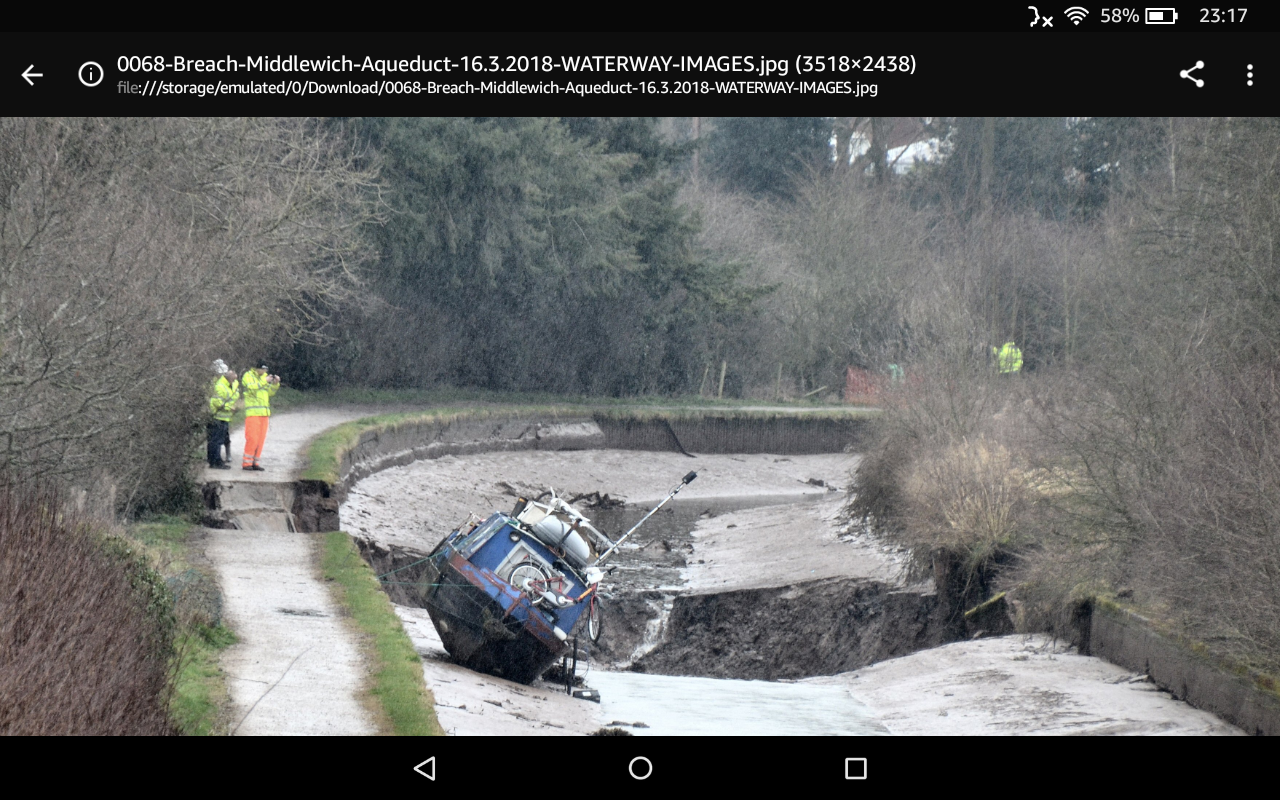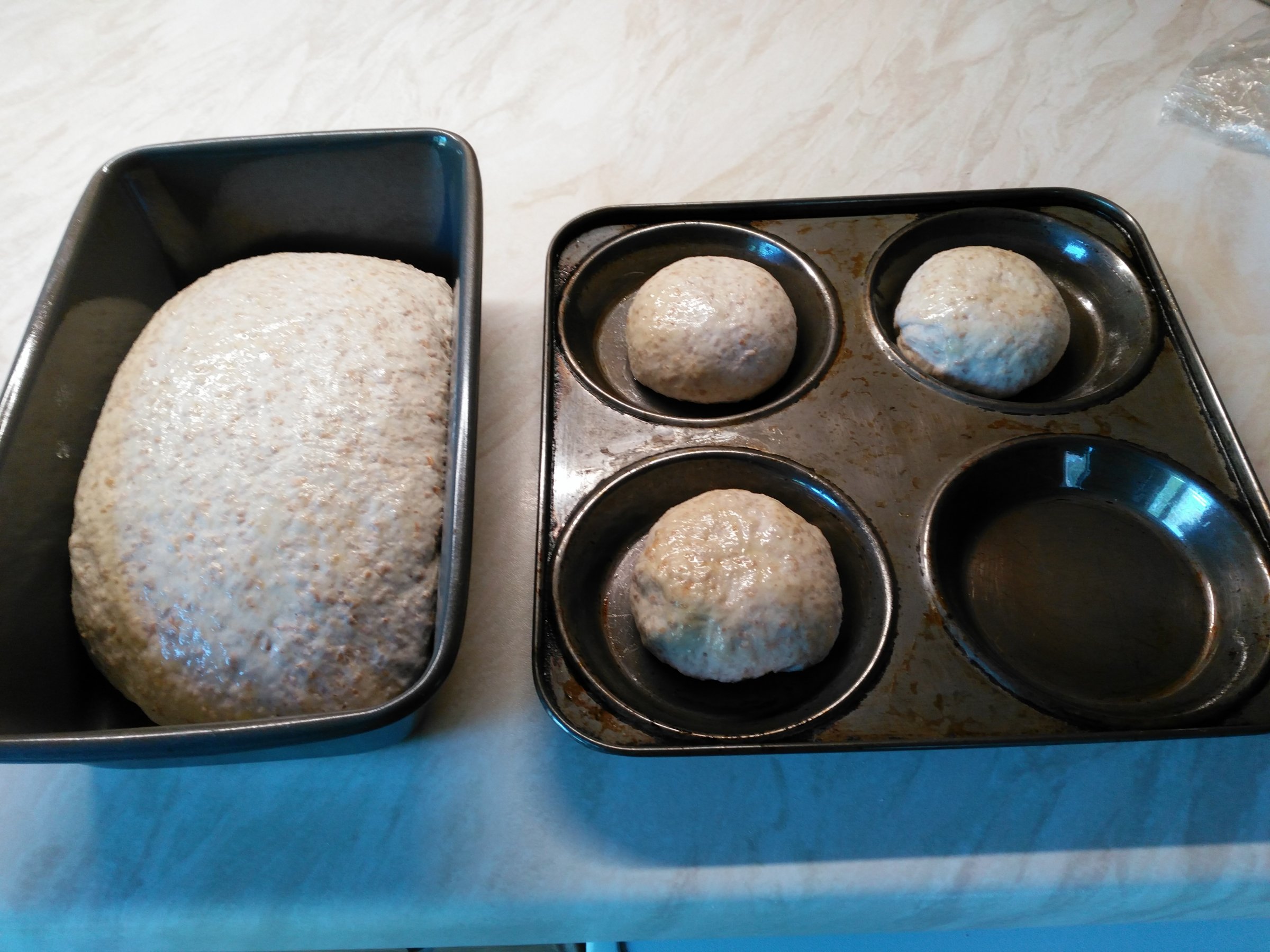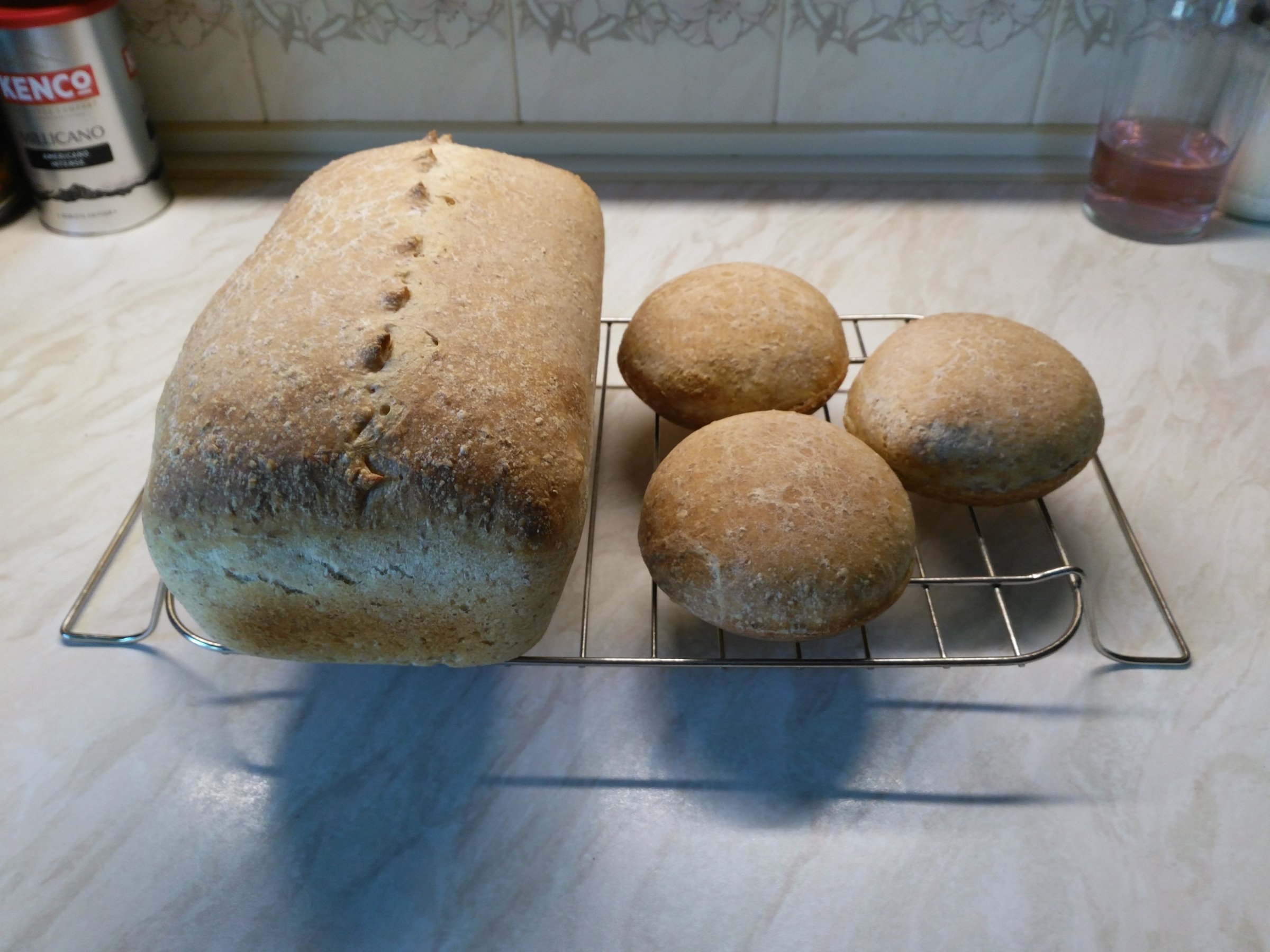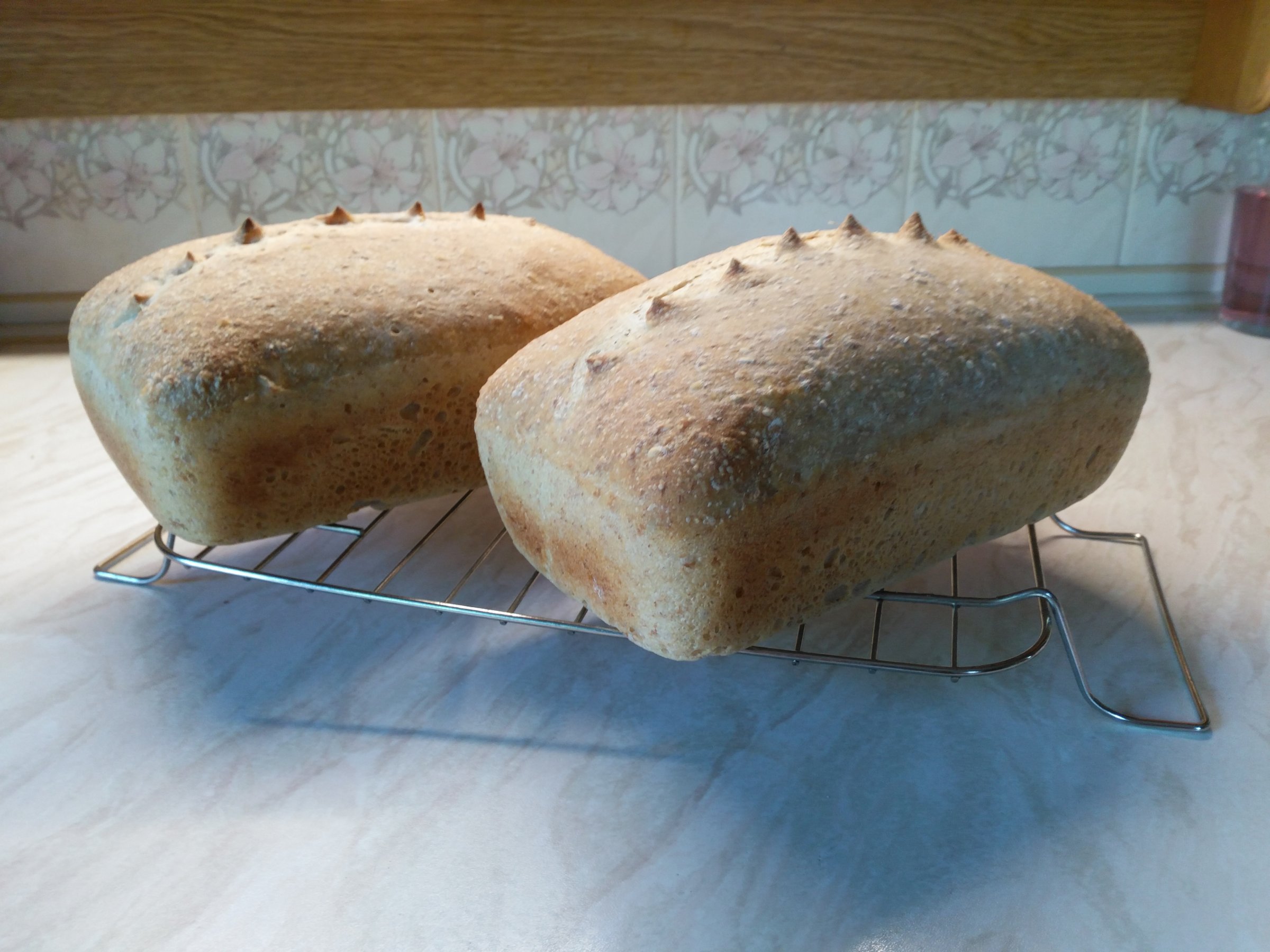-
Posts
1,811 -
Joined
-
Last visited
-
Days Won
1
Content Type
Profiles
Forums
Events
Gallery
Blogs
Store
Everything posted by Lily Rose
-
Damn, that means having to sit through interminable adverts on the player. So I may not bother. Was hoping it would be iPlayer. Seven episodes here... http://www.channel4.com/programmes/my-floating-home/on-demand/62243-001
-

District enforcement mooring fine Reading
Lily Rose replied to francois wilton's topic in General Boating
Forgot to mention two things about Meatmasters... 1. The best way to it is to walk back to the lock from where there is a footpath through to the industrial estate. 2. They also sell fruit and veg. -

District enforcement mooring fine Reading
Lily Rose replied to francois wilton's topic in General Boating
I thought you would have stocked up in Abingdon. Waitrose is only half a mile, if that, from where you moored. There's also a Co-op that's even closer, just a few hundred yards the beyond the church you were moored opposite. -

District enforcement mooring fine Reading
Lily Rose replied to francois wilton's topic in General Boating
You're welcome. I see from your blog you are going up to Lechlade. If you like sausages make sure you walk up to the butchers there, we had some super sausages from them last year. I think your last chance to do any shopping before Lechlade will be at Oxford East St (another TVM mooring). After that the river gets very remote. Turn left into Botley Road at the bridge and walk half a mile (away from the city centre) where there is a Waitrose on the RH side. Half a mile further is Aldi on the left. Also close to East St is a good butchers called Meatmasters. It's on an industrial estate and not so easy to find but with their website and Google Maps it's fairly straightforward. The bridge at East St is VERY low so make sure your chimney is down etc. There wasn't much clearance above our solar panels. -

District enforcement mooring fine Reading
Lily Rose replied to francois wilton's topic in General Boating
If it's run by "Thames Visitor Moorings", on behalf of the EA, and if it hasn't changed since last year, then it's free for 24 hours then £5 for EACH of the next two 24 hour periods then £100 for each one after that. BUT you have to go to their website, register yourself and then each time you use their moorings you have register your visit. The website tells you where all their moorings are. -

District enforcement mooring fine Reading
Lily Rose replied to francois wilton's topic in General Boating
It was indeed 5 days, as Ditchcrawler says. That was until last autumn when it was reduced to 3 due to abuse by CMers who, apparently, simply refused to move when asked to. Hopefully the greater turnaround due to the 3 day max will make it easier to find spaces. It can get pretty busy in summer, though I saw lots of spaces when I walked along last Saturday at the start of the heatwave. There was nothing on the section below the locks and there were spaces both sides at the Abbey Meadows play area. Hope you are enjoying your stay. I'm in Abingdon too but unfortunately the boat isn't as I'm at home and the boat is 50 miles away. Roll on the 22nd when we're back afloat. And roll on July when, hopefully, we can bring the boat back down to Abingdon for a 2nd time. -
In the last few hours, and thanks to Athy, this thread seems to have got back totally on topic so I now feel inclined to add my story. I would start by saying to the OP - go for it! We had hired relatively few times but spread over many years... 1976 Norfolk Broads GRP 1978 The Thames GRP 1990 Caledonian Canal GRP (with children) 2011 Ashby Canal narrowboat 2015 Shroppie narrowboat (6 months after retiring at 59) During the 2015 hire, while enjoying beer in the sunshine on the cruiser stern, I broached the subject by saying to my wife that we could do this whenever we liked if we bought a boat now that I had retired. Over the years I had frequently thought I'd like to own a boat but, being a pretty risk-averse accountant by profession, never really thought I would. But then, having retired, and having both the money and the time to enjoy boating, I thought that if I'm ever going to do it, it should be now before I became much older and possibly too unfit. I had toyed with the idea of a share boat but really wanted to be able to go to a boat, our own boat, at a moment's notice whenever we felt like it. As soon as we got back from the July 2015 hire I started to look for a boat, expecting this to take any months but hopefully in time for Spring 2016 cruising. Instead, our boat found us almost straight away and within a month of returning from the hire we'd bought a 45' narrowboat after a survey. My wife, who was far less keen than me, loved the boat and now enjoys it just as much as I do. Due to Monday school-run commitments we are unable to have very long trips and have to concentrate most of our boating on school holidays but even so, we are averaging about 4 months a year on the boat. Last year it was 4.5 months, including 8 weeks out of 9 over the summer. I did initially have similar feelings to Ray, and for a few months after I had long periods of elation and occasional, thankfully shorter, periods of buyer's remorse. I reckon costs to have averaged about £5k per year so far during the (almost) 3 years since buying, including some money spent on some improvements such as solar (which I would strongly recommend - I wish I'd had more than 200W fitted). By the time of our 3 year anniversary of ownership in early August we should be only a few weeks short of having spent a year on the boat. I'm not sure I would want to live on a boat (a bigger one) all year round but having time on the boat for part of the year, and time at home for part of the year, seems to me to be ideal. So far, no regrets. My conclusion - don't hesitate!
-
Thank you kindly, though I wish I had some real skills such as being able to fix broken things on a boat or add stuff like more solar. Anyway, yesterday's bread was very tasty. Even Lily Rose (the grandaughter, not the boat!) said a slice of bread and jam when she got home from school was "amazing". And she's a very fussy eater. She also reckons it makes the best cheese and ham sandwiches. Some people might say an overnight method involving little or no kneading is not as good as bread made with a 10 to 15 minute knead. I say they may well be right. But no-knead is easily good enough. Pareto principles apply - if I can get 80% of the benefit for 20% of the effort that'll do for me. If anyone fancies trying this but can't be arsed with the effort of making a starter (it's easy), or the expense of buying one (not cheap!), or they just don't like the sourdough taste (I love it but I'm sure some people don't) then use the same method but with yeast instead of starter. Bear in mind though that only a tiny amount of yeast is needed, try half a teaspoon initially. Even that might prove (haha) to be too much. If you use sachets just put the rest in the fridge, it'll easily keep for week or two and probably longer. I find one of these, at £2 + p&p, very handy... https://www.hobbshousebakery.co.uk/products/dough-scraper . A bag or two of flour in the cupboard, some yeast or starter in the cupboard/fridge and water in the tank and there's no more worrying about having to find a shop when the bread's about to run out.
-

holy crap......we just brought a boat.......ahhhhhhhh scary
Lily Rose replied to Matt&Jo's topic in New to Boating?
I'm not sure you've fully thought this through? Firstly you will only be able to moor up where the water depth is 5ft at 7ft from the bank. Secondly you will need to moor up on the offside 50% of the time unless your boat is only, say, 25ft long so you can turn just about anywhere. Back to the drawing board. -

holy crap......we just brought a boat.......ahhhhhhhh scary
Lily Rose replied to Matt&Jo's topic in New to Boating?
Too risky! I tried that and look what happened to my boat, it nearly fell over when CRT trialled lower levels to save money. -
Haha I deliberately snip them that way with scissors at a 45° angle to amuse my 6 year old grandaughter. As the oven spring takes place they rise up and make the finished loaves look like dinosaurs to her so she calls them dinosaur loaves. Dinosaur loaves are better than tiger loaves.
-
-
In post 43, and a few subsequent posts, we went off topic for a while and onto the subject of sourdough bread. I've added some more stuff but in a new thread in the Recipes forum for anyone interested. It's here...
-
Following on from this... I stopped using my breadmaking machine about two years ago and went back to making bread by hand. Using an overnight method takes a lot longer but involves very little effort (little or no kneading) and gives greater satisfaction and, arguably, better bread. The shape is definitely better! Yesterday (at home) I made a sourdough loaf and three small rolls and today I made two sourdough loaves, both using my own homemade sourdough starter created just over a year ago. Both times I used an overnight (virtually) no-knead method. I used small loaf tins purchased cheaply last year from B&M as they produce loaves that don't take too long to cook - which helps conserve expensive bottled gas when on the boat. Tesco sell similar sized (very slightly smaller) tins for £2. For the B&M tins trial and error has shown the following quantities PER TIN to be perfect in that when the dough reaches the top of the tin it has just about doubled in size and is therefore ready to go in a very hot oven (for the first half of the cooking time) which gives a decent oven spring resulting in a pleasing shape. From trial and error I reckon 25% wholemeal flour is a good compromise by giving a nice flavour, a bit of dietary fibre and not too much impact on texture. The hydration rate I use is 60% (ratio of water weight to flour weight) and the starter* is at a hydration rate of 100% (i.e. each time it is fed I add equal quantities, by weight, of white flour and water). * Making a starter... https://www.goodhousekeeping.co.uk/institute/cookery-videos/bread/how-to-make-sourdough-starter My recipe... 110g strong (bread) wholemeal flour 330g strong white flour 100g sourdough (not much is needed when leaving it overnight) 5g (1 teaspoon) salt 264 water Just before bedtime - put flour and salt into a large mixing bowl and mix together. Make a well in the centre then add the starter. Add the water to this and stir the starter and water together and then start to incorporate the flour and keep mixing until all the flour is mixed in. I do all this with a dessert spoon, as it's less messy than by hand, but but the latter stages can be done by hand if it becomes too difficult. Cover with cling film then go to bed. First thing next morning - the dough will probably have doubled in size depending on the temperature overnight. Whether or not it has, I tip the dough out onto a floured surface, give it a brief knead (30 seconds) and then divide it in two, shape each half to get a smooth top and then place into lightly oiled tins. Apply a little oil to the crust (olive oil gives a nice flavour) and spread it using a finger or a brush and cover with clingfilm. The oil stops the cling film sticking when the dough rises up to touch it. Leave until doubled in size. This will probably take between 2 and 4 hours depending on ambient temperature. I sometimes speed it up by putting it in a warm place (e.g. oven at defrost setting or placed on a metal tray on top of a saucepan of very warm water). When the dough is doubled in size preheat the oven to 230°C or equivalent. Slash the top of the loaf, or snip with scissors, down the middle lengthwise (this helps prevent the loaf splitting while it rises rapidly in the oven, known as "oven spring") then place in the oven for 25 to 30 minutes. Halfway through this time turn the oven down to 200°C and turn the loaves round for a more even crust colour. After 25 to 30 minutes remove from the oven, tip out and tap the bottom of the loaf. If it sounds hollow it is done. If not, put it back for another 5 minutes. This method takes a long time from start to finish but very little effort is involved. Making the dough just before bedtime results in fresh bread being available for lunch the next day. Eaten the same day is best, as with any decent bread, but it keeps very well (better than yeast bread), it freezes well and it makes superb toast if cut thickly, say half an inch. The top crust, in particular, can burn easily when toasted so it needs a little care to avoid overdoing it. Next time I may try putting a small piece of greased foil over half the loaf to see if it keeps the crust colour a bit lighter at that end and therefore, hopefully, less likely to burn when toasted. Photos from today and yesterday to follow.
-
I don't know the Scottish system but presumably it hasn't found a way round the laws of supply and demand. Therefore I too assume that if nothing is selling then all the prices are too high resulting in supply exceeding demand. Equilibrium will not be restored until either buyers are willing to pay more or sellers are prepared to accept less.
-
If I was looking for a boat or a flat the broker/agent would be my first point of call. But NOT to find out if it was in the price range I was interested in. I would expect to already know the price before making the call otherwise I might be wasting my time calling. So I wouldn't bother. Therefore one potential customer is lost. And, I suspect, many others would be the same.
-
I've never understood why people do that. They must lose potential customers who won't call without first having some idea of the likely cost. I know I wouldn't.
-
Negotiations still at a very early stage then!
-
I just read that article. The method I used, in common with almost every other article/video I saw, involved nothing but flour and water, not an apple in sight. Unless you glanced over at the fruit bowl. The process to create a starter seems wasteful of flour but the discard can be used to make tasty pancakes, scallions etc. Once the starter is up and running there is no more waste.
-
I didn't say anything about how to create and maintain a starter as there are millions of articles and YouTube videos out there. I will just say it is easier than I expected and a small jar of starter will sit happily in the fridge unattended for weeks if you don't want to make the bread regularly. I did buy a nice Kilner style jar, similar to the one used in the Hobbs Bakery videos (TV's Fabulous Baking Boys/Brothers), but don't use it as a jam jar, or smaller, is big enough when you only need the small amounts required for overnight no-knead methods and it takes up much less space in my fairly small 12v fridge.
-
And maddening. These charges only started in the last year or so. Before that it was free for householders. I wonder how many people now get tempted to take the free option down a country lane.
-
I'd be interested in hearing how you get on. Have you tried making sourdough? I made my starter just over a year ago and now love sourdough so much that I've probably used yeast no more than 2 or 3 times since. It feels much more satisfying to be using nothing but flour and water plus a little salt, the bread is much nicer, it keeps longer and makes brilliant toast.
-
I've got a bread machine but haven't used it for a couple of years as I'm very happy, after much experimenting, with the method I now use. I can also use this method when we're on the boat when I couldn't and wouldn't use a breadmaker (takes up too much space on 45' boat and my inverter is not man enough). I use an overnight, virtually no-knead method. It takes a long time from start to finish but hardly any of that involves work. Using yeast rather than sourdough starter does make the process a bit quicker but I don't think it's as nice as sourdough and also sourdough keeps much better. I will be wanting some fresh bread and rolls for tomorrow's bbq so I've fed my starter this morning. Before bedtime tonight I will measure out the dry ingredients. Amounts vary, but usually in the same ratio, which tonight will be 200g wholemeal, 600g white, 8g salt. (I find 25% wholemeal gives good flavour without affecting the rise very much) After mixing together with a spoon I'll add 200g starter (if using yeast I'd probably use no more than 1/4 to 1/2 a teaspoon if leaving overnight) and then water at 60% hydration so 800g * 60% = 480g. I'll stir this together with a spoon until there are no dry ingredients visible. All this will take about 5 minutes and it will then be covered and left overnight. First thing tomorrow the dough, which will be about doubled in size, will be transferred to whatever cooking tins I'm going to use. It could go in directly without any kneading but a quick knead, less than 1 minute, results in a more pleasing look but it is optional. As I'm making rolls a quick knead makes dividing and shaping a lot easier. I will do a brief knead then divide into two. Half will go into a small greased non-stop loaf tin to make a small loaf. I'll spread a little olive oil on top (stops the cling film sticking but also makes a tasty crust) cover and put aside to prove until doubled in size. The other half will be divided up into pieces about 60g to 90g for rolls or about 170g for large baps and then placed on a tray. I'm going to experiment with a 4 hole Yorkshire pudding tray tomorrow but normally I just use a roasting tin or similar. Wipe or brush with olive oil and cover with cling film and leave until doubled in size. If this is taking longer than I want (unlikely in current temperatures) I might hurry it along by putting into the oven on defrost setting (at home) or placing over a saucepan of very warm water (on the boat). All will go in the oven at 230C for 15 minutes, then turned and left at 200C for another 5 minutes for rolls and 10 to 15 minutes for the loaves. On the subject of using breadmakers for dough, I did this a couple of times but also found it very messy. It did occur to me, but I haven't tried it, that it might be less messy if, after the kneading/rising process finishes, you start the breadmaker going again but on it's normal setting for a minute or two during which time it should bring it all back together into a ball of dough. Perhaps sprinkle a little flour in just before stopping it. You would hopefully then have a lightly floured ball of dough that is easier to remove. It can then be divided and shaped before being left to prove before baking. Worth a try perhaps?
-
In Oxfordshire you have to pay to take almost anything to the tip if it's not classed as household waste. Apparently they have a legal duty to take household waste but could, if they wished, refuse to take, for example, DIY waste. Instead they charge for it (no wonder fly tipping, probably including into canals, is such a problem) and it isn't cheap ( https://www2.oxfordshire.gov.uk/cms/content/charges-non-household-waste) E.g. £1.50 for a fence panel, £1.50 for a bag of rubble, £2.50 for a bag of plasterboard (this cost me about £75 a few weeks ago).
-
Managed to have a barby, unfortunately it had be in the garden rather than beside the boat and it was sans Braunston bangers. Still, Porky Whites in homemade sourdough rolls washed down with Fullers ESB ain't bad.








